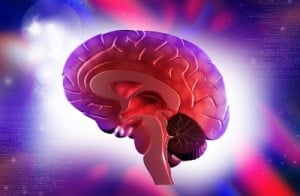
April is Autism Awareness Month, a time dedicated to raising awareness of autistic spectrum disorders in a continued effort to improve the quality of life for those struggling. Nationally, a puzzle piece is known to be a symbol for autism awareness because each puzzle piece is different, representing the diversity of the individuals affected, just as each individual case of autism is unique. The reason for classifying autism within the autistic spectrum is because every individual may have a variety of symptoms while simultaneously lacking other symptoms that are commonly associated with autism. In fact, sometimes autism can be difficult to fully identify for this reason.
In 2013, new diagnostic criteria were developed to identify autism within three levels of support. However, there are no particular criteria that would automatically assign someone to a level as each case varies greatly. The term “high-functioning autism” refers to a person who may have mild symptoms of autism that are significant enough to warrant a diagnosis, yet who’s symptoms do not completely align with classic autism. This makes pinning down a diagnosis difficult at times. The diagnosis of Level 1 Autism Spectrum Disorder refers to those who are functional yet exhibit symptoms of autism.
What symptoms occur for Level 1 Autism Spectrum Disorder?
Those identified as Level 1 are able to function while still having difficulties in some of the key areas that are identified within the autistic spectrum. They are typically able to read, write, do math, and other education-related work. However, socially, they have difficulties such as trouble picking up on social cues, keeping eye-contact, or maintaining conversations. Level 1 is also associated with mild to significant speech delays and sensory challenges. Those identified as level 1 may have a some of these symptoms, but not others, as each case is uniquely individual.
The Difference Between High Functioning and Low Functioning Autism
 High-functioning autism is a term used to describe someone who is able to function in every day settings. Using spoken language to communicate is considered high-functioning as many people with autism may have limited spoken language. Having language abilities makes the stresses of academic settings are more manageable. High-functioning autism is also identified by a person’s ability to pick up on social cues, because they have a greater awareness of social conventions.
High-functioning autism is a term used to describe someone who is able to function in every day settings. Using spoken language to communicate is considered high-functioning as many people with autism may have limited spoken language. Having language abilities makes the stresses of academic settings are more manageable. High-functioning autism is also identified by a person’s ability to pick up on social cues, because they have a greater awareness of social conventions.It is important to note that the difference between high and low functioning autism is neither definite nor obvious. The terms high and low functioning are never intended to indicate intelligence level. The terms do not take into account levels of anxiety or levels of sensory challenges. Additionally, aggressive behavior can be seen in all levels of autism.
Dr. Ross has helped identify and reduce or eliminate symptoms of autism using neurofeedback and other effective interventions.
First photo courtesty of Stuart Miles at www.FreeDigitalPhotos.net
Second photo courtesty of marin at www.FreeDigitalPhotos.net








